From CNN /By Jacqui Palumbo
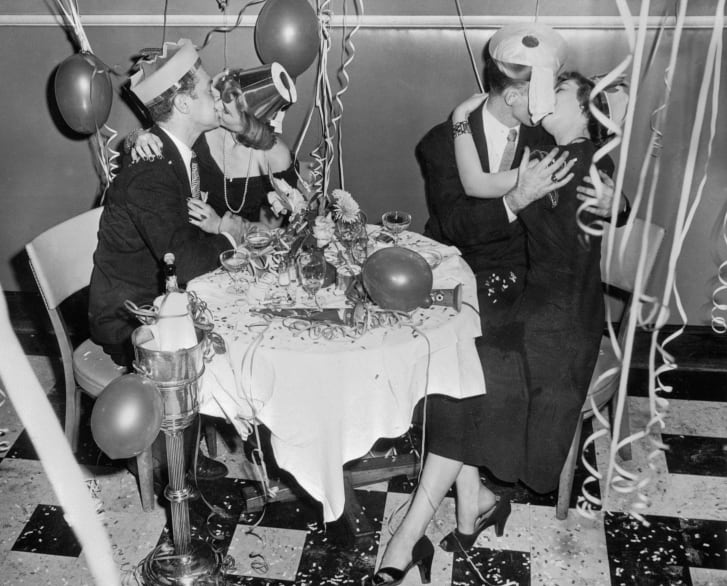 New Year’s Eve has its own set of rituals: the ball drop, resolutions and sealing the new year with a kiss.
New Year’s Eve has its own set of rituals: the ball drop, resolutions and sealing the new year with a kiss.
 The Times Square Ball has had seven different designs.
The Times Square Ball has had seven different designs.
Nautical inspiration
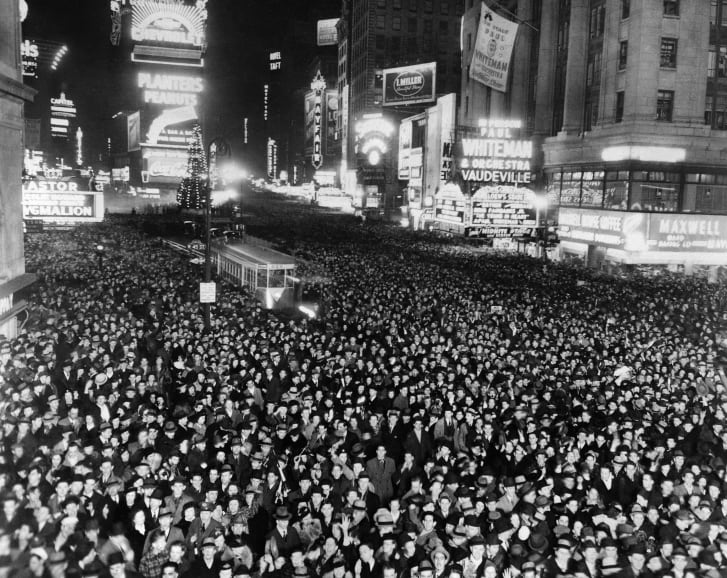
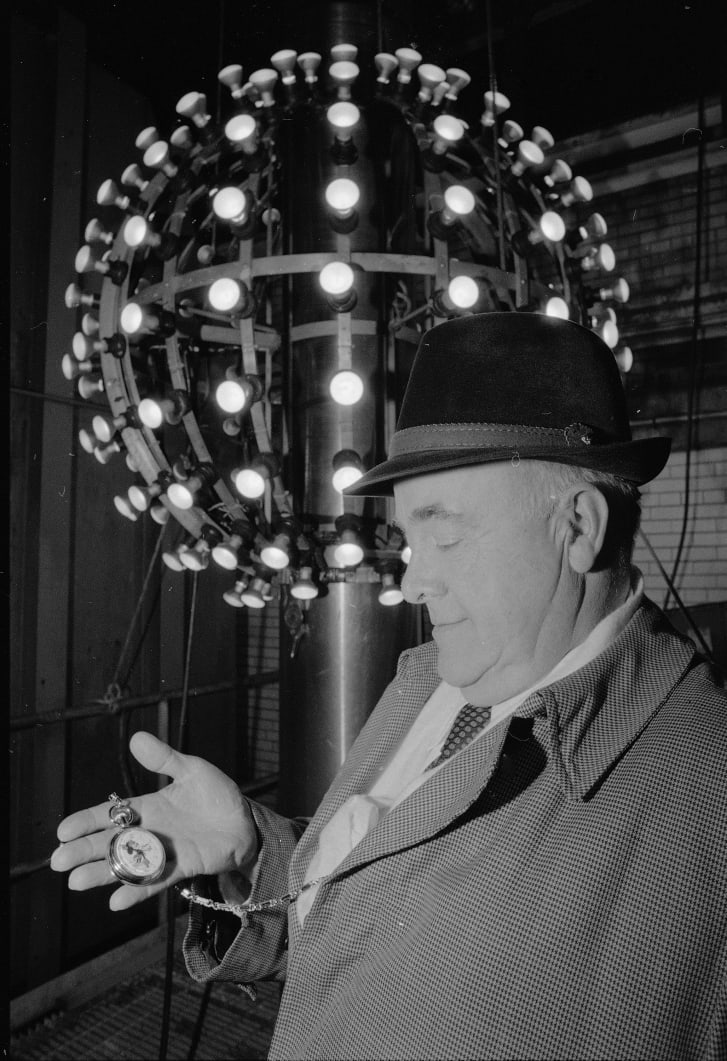

‘A minute outside of time’
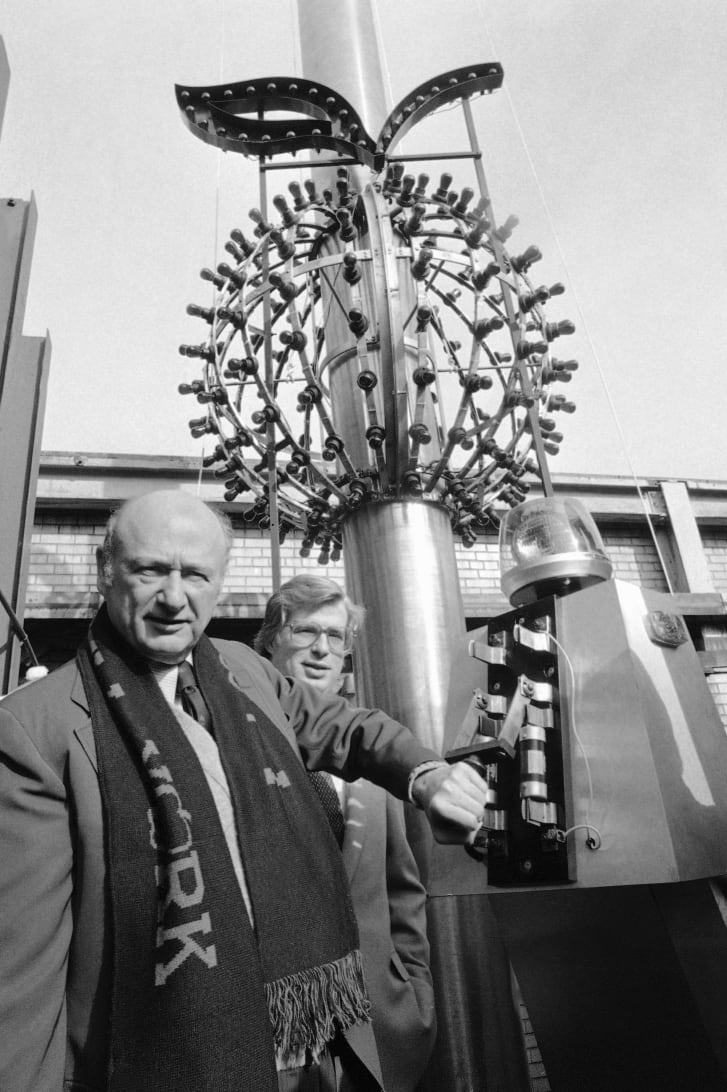
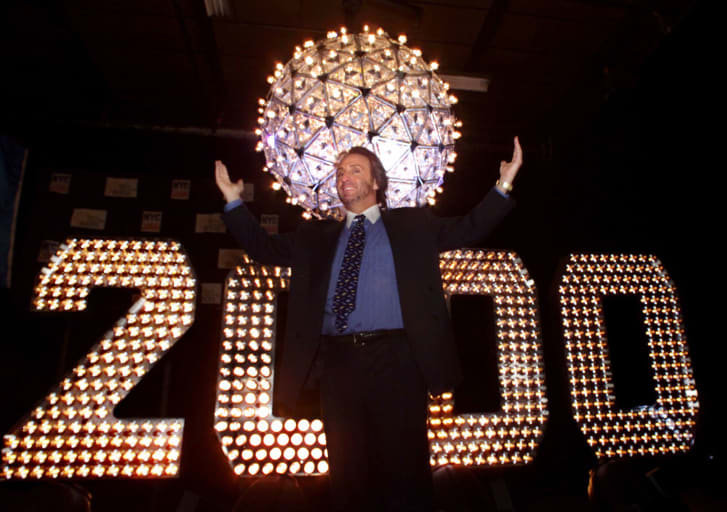
From CNN /By Jacqui Palumbo
 New Year’s Eve has its own set of rituals: the ball drop, resolutions and sealing the new year with a kiss.
New Year’s Eve has its own set of rituals: the ball drop, resolutions and sealing the new year with a kiss.
 The Times Square Ball has had seven different designs.
The Times Square Ball has had seven different designs.





From BBC/By James Gallagher
The rapid spread of a new variant of coronavirus has been blamed for the introduction of strict tier four mixing rules for millions of people, harsher restrictions on mixing at Christmas in England, Scotland and Wales, and other countries placing the UK on a travel ban.
So how has it gone from being non-existent to the most common form of the virus in parts of England in a matter of months?
The government’s advisers on new infections now say they have “high” confidence that it is more able to transmit than other variants.
All the work is at an early stage, contains huge uncertainties and a long list of unanswered questions.
As I’ve written before, viruses mutate all the time and it’s vital to keep a laser focus on whether the virus’ behaviour is changing.
Three things are coming together that mean it is attracting attention:
All of these come together to build a case for a virus that can spread more easily.
However, we do not have absolute certainty. New strains can become more common simply by being in the right place at the right time – such as London, which had only tier two restrictions until recently.
But already the justification for tier four restrictions is in part to reduce the spread of the variant.
“Laboratory experiments are required, but do you want to wait weeks or months [to see the results and take action to limit the spread]? Probably not in these circumstances,” Prof Nick Loman, from the Covid-19 Genomics UK Consortium, told me.
It was first detected in September. In November around a quarter of cases in London were the new variant. This reached nearly two-thirds of cases in mid-December.
You can see how the variant has come to dominate the results of testing in some centres such as the Milton Keynes Lighthouse Laboratory.
Mathematicians have been running the numbers on the spread of different variants in an attempt to calculate how much of an edge this one might have.
But teasing apart what is due to people’s behaviour and what is due to the virus is hard.
The figure mentioned by Prime Minister Boris Johnson was that the variant may be up to 70% more transmissible. He said this may be increasing the R number – which indicates if an epidemic is growing or shrinking – by 0.4.
That 70% number appeared in a presentation by Dr Erik Volz, from Imperial College London, on Friday.
During the talk he said: “It is really too early to tell… but from what we see so far it is growing very quickly, it is growing faster than [a previous variant] ever grew, but it is important to keep an eye on this.”
There is no “nailed on” figure for how much more infectious the variant may be. Scientists, whose work is not yet public, have told me figures both much higher and much lower than 70%.
But there remain questions about whether it is any more infectious at all.
“The amount of evidence in the public domain is woefully inadequate to draw strong or firm opinions on whether the virus has truly increased transmission,” said Prof Jonathan Ball, a virologist at the University of Nottingham.
It is thought the variant either emerged in a patient in the UK or has been imported from a country with a lower ability to monitor coronavirus mutations.
The variant can be found across the UK, except Northern Ireland, but it is heavily concentrated in London, the South East and eastern England. Cases elsewhere in the country do not seem to have taken off.
Data from Nextstrain, which has been monitoring the genetic codes of the viral samples around the world, suggest cases in Denmark and Australia have come from the UK. The Netherlands has also reported cases.
A similar variant that has emerged in South Africa shares some of the same mutations, but appears to be unrelated to this one.
Yes.
The virus that was first detected in Wuhan, China, is not the same one you will find in most corners of the world.
The D614G mutation emerged in Europe in February and became the globally dominant form of the virus.
Another, called A222V, spread across Europe and was linked to people’s summer holidays in Spain.
An initial analysis of the new variant has been published and identifies 17 potentially important alterations.
There have been changes to the spike protein – this is the key the virus uses to unlock the doorway to our body’s cells.
One mutation called N501Y alters the most important part of the spike, known as the “receptor-binding domain”.
This is where the spike makes first contact with the surface of our body’s cells. Any changes that make it easier for the virus to get inside are likely to give it an edge.
“It looks and smells like an important adaptation,” said Prof Loman.
The other mutation – a H69/V70 deletion, in which a small part of the spike is removed – has emerged several times before, including famously in infected mink.
Work by Prof Ravi Gupta at the University of Cambridge has suggested this mutation increases infectivity two-fold in lab experiments.
Studies by the same group suggest the deletion makes antibodies from the blood of survivors less effective at attacking the virus.
Prof Gupta told me: “It is rapidly increasing, that’s what’s worried government, we are worried, most scientists are worried.”
The variant is unusually highly mutated.
The most likely explanation is the variant has emerged in a patient with a weakened immune system that was unable to beat the virus.
Instead their body became a breeding ground for the virus to mutate.
There is no evidence to suggest that it does, although this will need to be monitored.
However, just increasing transmission would be enough to cause problems for hospitals.
If the new variant means more people are infected more quickly, that would in turn lead to more people needing hospital treatment.
Almost certainly yes, or at least for now.
All three leading vaccines develop an immune response against the existing spike, which is why the question comes up.
Vaccines train the immune system to attack several different parts of the virus, so even though part of the spike has mutated, the vaccines should still work.
“But if we let it add more mutations, then you start worrying,” said Prof Gupta.
“This virus is potentially on a pathway for vaccine escape, it has taken the first couple of steps towards that.”
Vaccine escape happens when the virus changes so it dodges the full effect of the vaccine and continues to infect people.
This may be the most concerning element of what is happening with the virus.
This variant is just the latest to show the virus is continuing to adapt as it infects more and more of us.
A presentation by Prof David Robertson, from the University of Glasgow on Friday, concluded: “The virus will probably be able to generate vaccine escape mutants.”
That would put us in a position similar to flu, where the vaccines need to be regularly updated. Fortunately the vaccines we have are very easy to tweak.
From CNN /By Max Foster and Lauren Said-Moorhouse
London (CNN)2020 was a tumultuous year for most people, and that’s no less true for Queen Elizabeth II.
From CNBC/By Steve Kovach
Apple CEO Tim Cook gave a slap at the business practices of Big Tech rivals during an impassioned speech at a privacy conference in Brussels in October 2018.
“Every day, billions of dollars change hands, and countless decisions are made, on the basis of our likes and dislikes, our friends and families, our relationships and conversations. Our wishes and fears, our hopes and dreams,” Cook said. “These scraps of data, each one harmless enough on its own, are carefully assembled, synthesized, traded and sold.”
Although Cook didn’t call out Facebook by name, it was clear Mark Zuckerberg’s company was one of the targets. Facebook built an empire by hoovering up the data of its users to inform its targeted ad system. Its revenue topped $20 billion last quarter, and nearly 99% of it comes from advertising.
The speech was just one in a series of jabs Cook and Zuckerberg have taken at each other over nearly a decade. The tensions between Facebook and Apple date to the iPhone’s infancy and the quest for control over the next wave of computing.
In a 2014 cover story in Time, for example, Zuckerberg criticized Apple and Cook’s stance on privacy:
“A frustration I have is that a lot of people increasingly seem to equate an advertising business model with somehow being out of alignment with your customers,” Zuckerberg said. “I think it’s the most ridiculous concept. What, you think because you’re paying Apple that you’re somehow in alignment with them? If you were in alignment with them, then they’d make their products a lot cheaper.”
The war of words over the last decade highlights the fundamental difference in opinion between two giants over how business should be done on the internet.
In Facebook’s view, the internet is the Wild West, with a multitude of competing platforms offering innovative services for free. You may not pay for them with your money, but you pay by allowing your data to be tracked and packaged so advertisers can plop things you’d want to buy right in front of your face as you travel between devices and services.
In Apple’s view, the internet is just an extension of the personal computing revolution the company helped start in the 1980s, and your phone is the most personal device of all. You should know what companies are going to do with the information collected through that phone before you share it.
The war of words culminated last week with Facebook’s two-day campaign against Apple. The ads called foul on an impending change to the iPhone’s operating system designed to alert you when an app will track your personal data like location and browsing history, which companies like Facebook use to target their ads. The alert gives you the option to block the tracking before using the app.
Facebook claimed that Apple’s move is designed to crush small businesses that rely on that targeted advertising to reach their customers online. It also warned — without evidence — that Apple’s move would force app makers to stop offering free, ad-supported apps to their customers. Instead, they would have to charge customers through digital subscriptions or other fees. Conveniently for Apple, it takes a cut of transactions conducted through its platform, including purchases or subscriptions that users make through apps they download on its App Store.
Facebook painted a devious picture of Apple in the campaign: Here’s a company with complete control over the rules of its platform, making a change designed to squeeze small businesses and force them into a paid model, of which Apple will take a cut. Facebook delivered that messaging in newspaper ads, blog posts, Instagram posts and a glitzy website featuring small business owners who use Facebook to advertise.
Apple pushed back on Facebook’s accusations. The company said the pop-up you’ll see in apps is only designed to let you know when and how an app plans to track you, not ban tracking altogether. App makers like Facebook also have room in the pop-up and other screens to make their case to you for why you should allow tracking. Apps are still free to collect all the data on you that they were before, but you’ll have to give them deliberate permission to do so. According to Apple, it’s just the latest in a string of privacy-centric features it has added to products over the years.
The roots of the squabble stretch back more than a decade.
In the iPhone’s infancy, there was a great debate over what the mobile internet should look like. Would it look the internet on a desktop PC, where people mostly used a mobile web browser to visit websites, with everything built on openly published standards? Or would users switch between a collection of internet-connected software “apps,” giving more control to the companies that owned the mobile platforms?
Facebook, which was born on the open internet, favored the former option and pushed for rich web apps written to emerging standards. But it lost the fight in large part because of Apple, which pushed the app model as the default way of accomplishing tasks on the iPhone, then insisted that its own App Store would be the only legal and easy way to find and install those apps. (Google smartly played both sides, investing in the Android mobile platform and its own Google Play app store, as well as building out its Chrome web browser and exercising influence over web standards.)
As the future became clear, Facebook made attempts to build its own smartphone so it wouldn’t have to concede so much control to Apple or Google. The device never saw the light of day, and Facebook instead developed a software “skin” for Android devices that featured its own services. That was also a flop.
Today, Facebook is laying the groundwork to own the next major computing platform so it doesn’t have to play by another company’s rules again. That’s why it’s currently developing products like digital glasses, which the company is expected to launch in 2021.
In the meantime, Facebook has to deal with Apple.
It’s ironic that Facebook accused Apple of abusing its market power last week, just days after the FTC and a group of state attorneys general sued Facebook, alleging antitrust violations and recommending a breakup of the company.
On top of that, Facebook’s argument exposed its own hold on the digital ads market. Small businesses wouldn’t have to rely so much on Facebook if Facebook had a viable competitor for these companies to advertise through.
Apple faces similar government scrutiny, although there have been no formal antitrust lawsuits. In October, the House Judiciary subcommittee on antitrust released an epic report on the “monopoly power” of the four biggest tech giants, alleging Apple uses its control of the App Store to squash potential competitors.
Both companies have rejected claims that their businesses violate antitrust laws. But Facebook has now created an environment where two giants facing antitrust scrutiny in the U.S. and around the world are trading barbs over which one is more guilty when it comes to abuse of market power.
It’s also hard to tell what Facebook’s end game is here. Apple is not going to backtrack on a key privacy feature for the iPhone, and Facebook is not going to risk losing millions of users by yanking its apps off the App Store.
Steve Satterfield, Facebook’s director of privacy and public policy, told CNBC this week that the company will still comply with Apple’s new rules, and there’s no chance Facebook would flagrantly violate them to ignite a legal battle like the one Apple and “Fortnite” developer Epic Games are embroiled in now. (Facebook said last week it would support Epic in its lawsuit against Apple.)
“Our goal is simple,” Satterfield said. “We want Apple to start listening. They dropped this policy back in June with no meaningful consultation. … Considering the far-reaching impact, it’s important businesses can plan for it.”
It’s also difficult to buy Facebook’s stated argument against the pop-up. For years the company has argued that its users prefer the personalized and targeted ads that its data collection enables, as opposed to random ads served to a broad audience with no targeting. If that’s true, then users should have no problem enabling the tracking when Apple shows them the pop-up.
In August, Facebook undercut that argument when it released data from a study showing enough people would disable tracking to cause a 50% drop in revenue through its third-party ad networks. The company also warned investors this year that its own revenue would take a hit when Apple starts enforcing the tracking tool.
Facebook said it would prefer to use its own privacy checkup tools to help users limit what data to share, instead of the notification Apple will show you.
Apple said its customers want more privacy controls built into the iPhone. After years of criticizing the business practices of Facebook, the company has routinely added privacy features to tamp down on the abuses it’s seen on its devices.
“Look at what we’ve done with the controls we’ve built in,” Cook said in a 2018 interview with Axios when asked why companies like Google and Facebook are allowed to thrive on the iPhone despite his criticism of their practices. “We have private web browsing. We have an intelligent tracker prevention. What we’ve tried to do is come up with ways to help our users through their course of the day.”
It wasn’t just Apple pushing back against Facebook’s arguments. Groups of small business advertisers, the same ones Facebook said it was trying to protect, took over Facebook’s #SpeakUpForSmall hashtag on Twitter and filled it with complaints about the lack of attention they get compared with Facebook’s larger ad clients the day the campaign launched.
And Bloomberg published a report earlier this week full of similar complaints from advertisers over the company’s automated ad buying tools. BuzzFeed published a story Tuesday citing Facebook employees who were just as confused over the anti-Apple crusade as the small business advertisers.
For its part, Facebook spokeswoman Ashley Zandy told CNBC the company has heard from many supportive companies and that it allows its employees to speak freely and question company strategy.
“I think we’ve seen a lot of balanced and nuanced coverage of the announcement,” Satterfield said. “I think we’re pleased.”
(Reuters) – Apple Inc is moving forward with self-driving car technology and is targeting 2024 to produce a passenger vehicle that could include its own breakthrough battery technology, people familiar with the matter told Reuters.
The iPhone maker’s automotive efforts, known as Project Titan, have proceeded unevenly since 2014 when it first started to design its own vehicle from scratch. At one point, Apple drew back the effort to focus on software and reassessed its goals. Doug Field, an Apple veteran who had worked at Tesla Inc, returned to oversee the project in 2018 and laid off 190 people from the team in 2019.
Since then, Apple has progressed enough that it now aims to build a vehicle for consumers, two people familiar with the effort said, asking not to be named because Apple’s plans are not public. Apple’s goal of building a personal vehicle for the mass market contrasts with rivals such as Alphabet Inc’s Waymo, which has built robo-taxis to carry passengers for a driverless ride-hailing service.
Central to Apple’s strategy is a new battery design that could “radically” reduce the cost of batteries and increase the vehicle’s range, according to a third person who has seen Apple’s battery design.
Apple declined to comment on its plans or future products.
Making a vehicle represents a supply chain challenge even for Apple, a company with deep pockets that makes hundreds of millions of electronics products each year with parts from around the world, but has never made a car. It took Elon Musk’s Tesla 17 years before it finally turned a sustained profit making cars.
“If there is one company on the planet that has the resources to do that, it’s probably Apple. But at the same time, it’s not a cellphone,” said a person who worked on Project Titan.
It remains unclear who would assemble an Apple-branded car, but sources have said they expect the company to rely on a manufacturing partner to build vehicles. And there is still a chance Apple will decide to reduce the scope of its efforts to an autonomous driving system that would be integrated with a car made by a traditional automaker, rather than the iPhone maker selling an Apple-branded car, one of the people added.
Two people with knowledge of Apple’s plans warned pandemic-related delays could push the start of production into 2025 or beyond.
Shares of Tesla ended 6.5% lower on Monday after their debut in the S&P 500 on Monday. Apple shares ended 1.24% higher after the news.
Apple has decided to tap outside partners for elements of the system, including lidar sensors, which help self-driving cars get a three-dimensional view of the road, two people familiar with the company’s plans said.
Apple’s car might feature multiple lidar sensors for scanning different distances, another person said. Some sensors could be derived from Apple’s internally developed lidar units, that person said. Apple’s iPhone 12 Pro and iPad Pro models released this year both feature lidar sensors.
Reuters had previously reported that Apple had held talks with potential lidar suppliers, but it was also examining building its own sensor.
As for the car’s battery, Apple plans to use a unique “monocell” design that bulks up the individual cells in the battery and frees up space inside the battery pack by eliminating pouches and modules that hold battery materials, one of the people said.
Apple’s design means that more active material can be packed inside the battery, giving the car a potentially longer range. Apple is also examining a chemistry for the battery called LFP, or lithium iron phosphate, the person said, which is inherently less likely to overheat and is thus safer than other types of lithium-ion batteries.
”It’s next level,” the person said of Apple’s battery technology. “Like the first time you saw the iPhone.”
Apple had previously engaged Magna International Inc in talks about manufacturing a car, but the talks petered out as Apple’s plans became unclear, a person familiar with those previous efforts said. Magna did not immediately respond to a request for comment.
To turn a profit, automotive contract manufacturers often ask for volumes that could pose a challenge even to Apple, which would be a newcomer to the automotive market.
“In order to have a viable assembly plant, you need 100,000 vehicles annually, with more volume to come,” the person said.
Some Apple investors reacted to the Reuters report on the company’s plans with caution. Trip Miller, managing partner at Apple investor Gullane Capital Partners, said it could be tough for Apple to produce large volumes of cars out of the gate.
“It would seem to me that if Apple develops some advanced operating system or battery technology, it would be best utilized in a partnership with an existing manufacturer under license,” Miller said. “As we see with Tesla and the legacy auto companies, having a very complex manufacturing network around the globe doesn’t happen overnight.”
Hal Eddins, chief economist at Apple shareholder Capital Investment Counsel, said Apple has a history of higher margins than most automakers.
“My initial reaction as a shareholder is, huh?” Eddins said. “Still don’t really see the appeal of the car business, but Apple may be eyeing another angle than what I’m seeing.”
Reporting by Stephen Nellis in San Francisco, Norihiko Shirouzu in Beijing; and Paul Lienert and Ben Klayman in Detroit; editing by Jonathan Weber, Edward Tobin and Sonya Hepinstall
Our Standards: The Thomson Reuters Trust Principles.
(Reuters) – Apple Inc is moving forward with self-driving car technology and is targeting 2024 to produce a passenger vehicle that could include its own breakthrough battery technology, people familiar with the matter told Reuters.
The iPhone maker’s automotive efforts, known as Project Titan, have proceeded unevenly since 2014 when it first started to design its own vehicle from scratch. At one point, Apple drew back the effort to focus on software and reassessed its goals. Doug Field, an Apple veteran who had worked at Tesla Inc, returned to oversee the project in 2018 and laid off 190 people from the team in 2019.
Since then, Apple has progressed enough that it now aims to build a vehicle for consumers, two people familiar with the effort said, asking not to be named because Apple’s plans are not public. Apple’s goal of building a personal vehicle for the mass market contrasts with rivals such as Alphabet Inc’s Waymo, which has built robo-taxis to carry passengers for a driverless ride-hailing service.
Central to Apple’s strategy is a new battery design that could “radically” reduce the cost of batteries and increase the vehicle’s range, according to a third person who has seen Apple’s battery design.
Apple declined to comment on its plans or future products.
Making a vehicle represents a supply chain challenge even for Apple, a company with deep pockets that makes hundreds of millions of electronics products each year with parts from around the world, but has never made a car. It took Elon Musk’s Tesla 17 years before it finally turned a sustained profit making cars.
“If there is one company on the planet that has the resources to do that, it’s probably Apple. But at the same time, it’s not a cellphone,” said a person who worked on Project Titan.
It remains unclear who would assemble an Apple-branded car, but sources have said they expect the company to rely on a manufacturing partner to build vehicles. And there is still a chance Apple will decide to reduce the scope of its efforts to an autonomous driving system that would be integrated with a car made by a traditional automaker, rather than the iPhone maker selling an Apple-branded car, one of the people added.
Two people with knowledge of Apple’s plans warned pandemic-related delays could push the start of production into 2025 or beyond.
Shares of Tesla ended 6.5% lower on Monday after their debut in the S&P 500 on Monday. Apple shares ended 1.24% higher after the news.
Apple has decided to tap outside partners for elements of the system, including lidar sensors, which help self-driving cars get a three-dimensional view of the road, two people familiar with the company’s plans said.
Apple’s car might feature multiple lidar sensors for scanning different distances, another person said. Some sensors could be derived from Apple’s internally developed lidar units, that person said. Apple’s iPhone 12 Pro and iPad Pro models released this year both feature lidar sensors.
Reuters had previously reported that Apple had held talks with potential lidar suppliers, but it was also examining building its own sensor.
As for the car’s battery, Apple plans to use a unique “monocell” design that bulks up the individual cells in the battery and frees up space inside the battery pack by eliminating pouches and modules that hold battery materials, one of the people said.
Apple’s design means that more active material can be packed inside the battery, giving the car a potentially longer range. Apple is also examining a chemistry for the battery called LFP, or lithium iron phosphate, the person said, which is inherently less likely to overheat and is thus safer than other types of lithium-ion batteries.
”It’s next level,” the person said of Apple’s battery technology. “Like the first time you saw the iPhone.”
Apple had previously engaged Magna International Inc in talks about manufacturing a car, but the talks petered out as Apple’s plans became unclear, a person familiar with those previous efforts said. Magna did not immediately respond to a request for comment.
To turn a profit, automotive contract manufacturers often ask for volumes that could pose a challenge even to Apple, which would be a newcomer to the automotive market.
“In order to have a viable assembly plant, you need 100,000 vehicles annually, with more volume to come,” the person said.
Some Apple investors reacted to the Reuters report on the company’s plans with caution. Trip Miller, managing partner at Apple investor Gullane Capital Partners, said it could be tough for Apple to produce large volumes of cars out of the gate.
“It would seem to me that if Apple develops some advanced operating system or battery technology, it would be best utilized in a partnership with an existing manufacturer under license,” Miller said. “As we see with Tesla and the legacy auto companies, having a very complex manufacturing network around the globe doesn’t happen overnight.”
Hal Eddins, chief economist at Apple shareholder Capital Investment Counsel, said Apple has a history of higher margins than most automakers.
“My initial reaction as a shareholder is, huh?” Eddins said. “Still don’t really see the appeal of the car business, but Apple may be eyeing another angle than what I’m seeing.”
Reporting by Stephen Nellis in San Francisco, Norihiko Shirouzu in Beijing; and Paul Lienert and Ben Klayman in Detroit; editing by Jonathan Weber, Edward Tobin and Sonya Hepinstall
Our Standards: The Thomson Reuters Trust Principles.
From udiscovermusic
Explore our selection of the best classical Christmas music including Bach’s ‘Christmas Oratorio’ and Tchaikovsky’s ‘The Nutcracker’.
Christmas is steeped in musical tradition, and its classical canon glistens with festive jewels. Our selection of the best classical Christmas music is a snapshot of many Christmases-past: feelings of joy, celebration, reflection and nostalgia are bound up in these beautiful, timeless scores. Pour yourself a glass of mulled wine, relax, and listen to these classical Christmas masterpieces featuring magnificent choral works and orchestral fantasies. Merry Christmas!
Listen to Classical Christmas on Apple Music and Spotify and scroll down to explore our selection of the best classical Christmas music.
Berlioz’s musical telling of The Childhood of Christ makes for perfect Christmas listening. This oratorio, written in 1854, tells the Holy story from Herod’s decree in Judea to the journey of Mary and Joseph and the birth of Christ. From the drama of ‘The Dream of Herod’ to the lilting tranquillity of ‘The Shepherd’s Farewell’, Berlioz’s warm-blooded, romanticism brings depth and colour to the biblical story.
Britten’s Ceremony of Carols showcases a host of heavenly voices accompanied simply by angelic harp. The use of only treble voices evokes a sense of child-like innocence, creating a warm, magical atmosphere. The piece itself is a selection of medieval carols, still in the original language, preserved in Britten’s refreshing compositional idiom. A wonderful classical stocking-filler.
Liszt’s Christmas Tree Suite for solo piano is a classical Christmas delight. The twelve pieces are, by Liszt’s standards, wonderfully simplistic in their composition and not too challenging to play; indeed, they were dedicated to Liszt’s eldest grandchild and sing of childlike wonder and innocence. This connection to younger generations permeates the score which, steeped in festive nostalgia, is a lesser-known gem in Liszt’s piano oeuvre and one of the best pieces of classical Christmas music.
A Christmas message from 400-years-ago, delivered in glorious choral counterpoint. Written in 1607, Bryd’s O Magnum Mysterium, is a beautiful motet for 4-part choir, and is a meditation on the wondrous Holy birth. A warm, subtle blend of ethereal voices with deep, resonant harmonies relay the text:
O great mystery
and wonderful sacrament
that even the animals saw
the new-born Lord
lying in a manger.
Blessed Virgin, whose womb
was worthy to bear
our Lord Christ
There is a tangible profundity to this piece: it feels vast yet intimate, celebratory yet reflective.
Picture a frosty winter morning. Hazy, muted strings and glowing harp gradually melt away, warmed by the depth of a pure, pristine baritone solo, angelic soprano and a choir of heavenly voices. In Terra Pax takes its text from St Luke’s account of the first Christmas Eve in Bethlehem, flanked by verses from Robert Bridges’ poem, Noel: Christmas Eve, 1913. The listener is at once swept away by the enchanting narrative and enveloped in a mass of warm strings and voices in this magical Christmas scene-setter.
Johann Sebastian Bach‘s Magnificat is a musical setting of the biblical canticle Magnificat – the Latin text of the story of the Virgin Mary as told in the Gospel of St. Luke. In 1723, soon after he had been appointed the Director of Music and Organist of St Thomas’s Church in Leipzig, Bach set the text of the Magnificat, originally composed in Eb major, which was first performed on Christmas Eve 1723. The following year Bach produced a new version, which he transposed into D major, to be performed at the feast of the Visitation in July. Magnificat is one of Bach’s most popular vocal works.
An epic rumination on the birth, death and resurrection of Christ, Handel’s 1742 oratorio is a stalwart fixture in both Easter and yuletide programmes and one of the best pieces of classical Christmas music. The first part, often referred to as the ‘Christmas’ part, features the iconic choruses ‘And He Shall Purify’ and ‘For unto us a Child is Born’. Performances of the Christmas part of the work are often concluded with the endlessly joyful ‘Hallelujah Chorus’.
This exultant orchestral melody is probably best known as the climax of Greg Lake’s ‘I Believe in Father Christmas’, but it was originally written by none other than Prokofiev for his Lieutenant Kijé suite. A ‘troika’ is a three-horse Russian sled: the excited flurry of strings, shimmering bells and festive brass depict a magical sleighride through the glistening snow. What could be more Christmassy!
2: Bach: Christmas Oratorio
This almost three-hour choral festive extravaganza is one of the best pieces of classical Christmas music. Bach’s Christmas Oratorio is divided into 6 cantatas, each to be performed in the days following Christmas. The first part, performed on Christmas Day, pronounces the Holy birth; the second, for the 26th, describes the annunciation to the shepherds; the third, the adoration of the shepherds, and so on. Each section has its own distinctive character, brought to life in Bach’s masterful composition, and is in equal parts intense, reflective, and jubilant.
Tchaikovsky’s timeless ballet, The Nutcracker, is top of our list. A Christmas Eve ball, toys that magically come to life, the enchanted land of the Sweets, waltzing snowflakes and dancing sugarplum fairies – this is a Christmas cracker of a piece. Tchaikovsky’s score captures the childlike wonder of this festive fairy tale with resplendent orchestra, twinkling percussion and, at moments, soft sweeping choir. The Nutcracker is an absolute classic – no Christmas would be complete without it.
From The Wall Street Journal
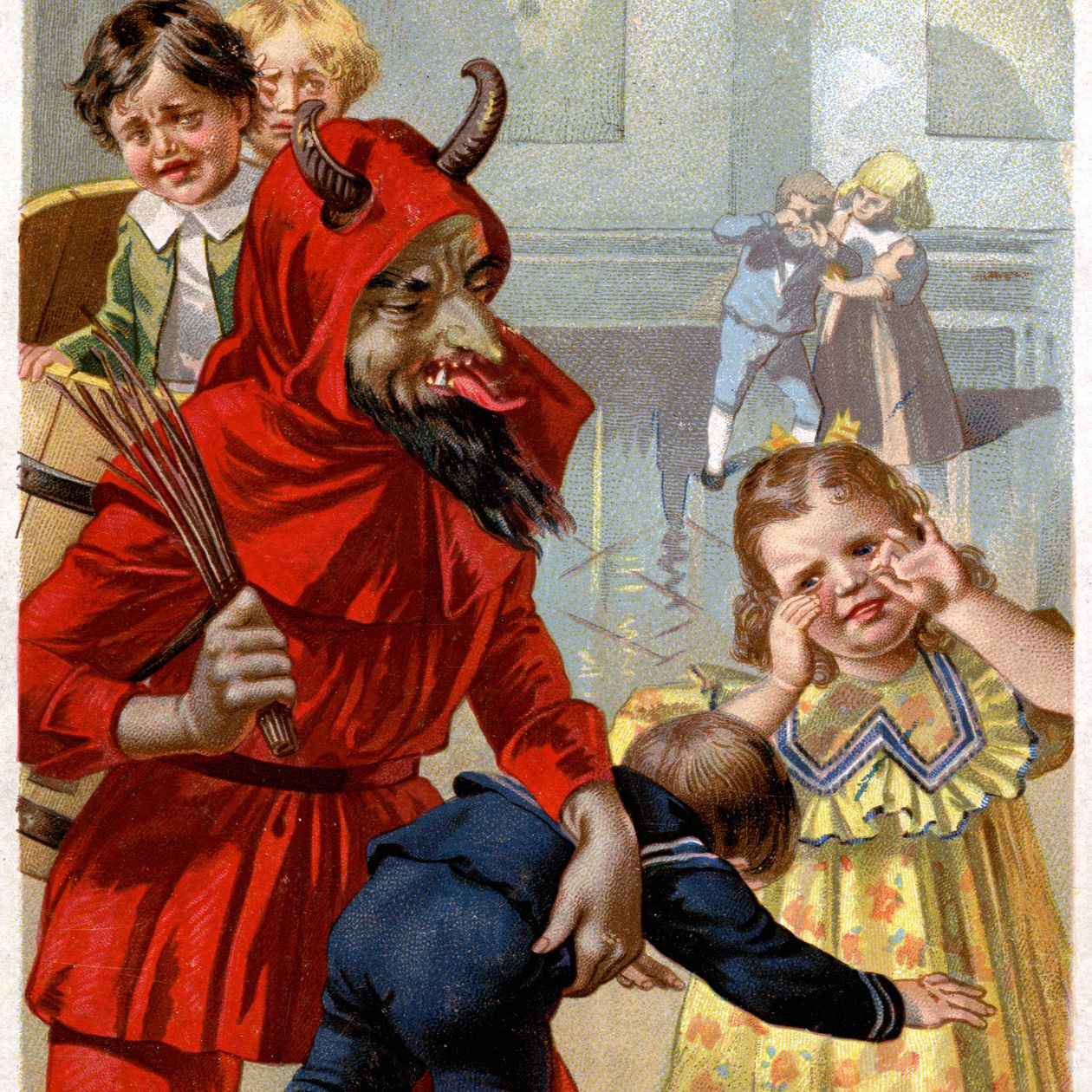
In this pandemic year, many of us will be celebrating Christmas under the shadow of grief and uncertainty. But Christmas, like the pagan winter festivals that preceded it, has always carried more than a hint of darkness. The joyous celebration of the birth of the Christian savior has often been an occasion for melancholy and nostalgia, particularly when families are separated by war or other tragic events.
In November 1863, during the Civil War, Henry Wadsworth Longfellow’s son Charles was seriously wounded in battle. A few weeks later on Christmas, Longfellow wrote “I Heard the Bells on Christmas Day,” reflecting on how the carnage “mocks” the holiday’s promise of “peace on earth, good-will to men.” In 1943, Bing Crosby’s recording of the song “I’ll Be Home for Christmas” spoke to millions of soldiers and their families who couldn’t celebrate the holiday together: “I’ll be home for Christmas/If only in my dreams.” And in 1967, as war raged in Vietnam, Stevie Wonder’s “Someday at Christmas” looked forward, like Longfellow’s poem, to a happier future: “Someday at Christmas there’ll be no wars/When we have learned what Christmas is for.”
In the 19th century, telling ghost stories on Christmas Eve was a popular tradition.
Christmas melancholy often takes a ghostly form. In the 19th century, telling ghost stories on Christmas Eve was popular in Britain and North America, a tradition that inspired many writers to create their own. The narrator of Henry James’s psychological horror story “The Turn of the Screw” calls it “gruesome, as, on Christmas Eve in an old house, a strange tale should essentially be.” Charles Dickens wrote a series of ghost stories published yearly at Christmas. “A Christmas Carol” is the most famous, but there were many others, including “The Signalman,” in which a railway worker receives spectral warnings of impending accidents. In the 20th century, continuing the tradition, Christmas has been a popular setting for horror movies, such as “Black Christmas” (1974) and “Krampus” (2015), which draws on German folklore about a demonic anti-Santa Claus who eats naughty children.
Many cultures have similar traditions about a Christmas visitor who punishes bad children, rather than bringing presents to good ones. In France, Père Fouettard (“Father Whipper”) is said to beat badly behaved children with a whip. On Christmas Eve in South Africa, homes may be haunted by Danny, a boy who was beaten to death by his grandmother for eating cookies left out for Santa.
Italy’s La Befana is more sad than scary. When the Christ child was born, she was invited by the three Magi to join them on the journey to Bethlehem, but she declined because she was too busy tending her house. She soon regretted her decision and went out to look for the wise men, but they were already gone. Ever since, on the Feast of the Epiphany—the holiday in early January that commemorates the visit of the Magi—she travels the world in search of the infant Jesus, leaving gifts for children wherever she stops.
Today, when we tend to think of Christmas as “The Most Wonderful Time of the Year”—as the hit song from 1963 calls it—it might seem strange to associate the holiday with melancholy and horror. But those elements are certainly present in the original Christmas story. After all, the child born in the manger is destined to suffer and die on the Cross; one of the gifts brought to the newborn Jesus by the Magi is myrrh, traditionally used in embalming. The Christmas carol “We Three Kings” makes the connection explicit: “Myrrh is mine; its bitter perfume/Breathes a life of gathering gloom/Sorrowing, sighing, bleeding, dying/Sealed in a stone cold tomb.”
On the Christian calendar, Christmas is surrounded by other grim memorials and observances. On Dec. 7, the eve of the Feast of the Immaculate Conception, Guatemalans start the Christmas season with La Quema del Diablo, “The Burning of the Devil,” burning Devil-shaped piñatas to symbolically cleanse their homes of evil. The day after Christmas, known as Boxing Day throughout much of the world, is also St. Stephen’s Day, which commemorates the stoning to death of the first Christian martyr. And on Dec. 28, the Roman Catholic and Anglican churches observe the Feast of the Holy Innocents, in honor of the infant boys of Bethlehem massacred on the order of King Herod, who according to the Gospel of Matthew hoped to do away with the prophesied King of the Jews. In many Latin American countries, the feast is celebrated like April Fools’ Day, with jokes, pranks and creative “fake news” stories in the papers.
Another source of Christmas darkness comes from the season, since it is celebrated during the darkest, shortest days of the year. Long before Christianity, late December in the northern hemisphere was a time for midwinter festivals full of mirth and light. In fact, the New Testament never says that Jesus was born in the winter; the traditional date of Christmas wasn’t adopted until the year 325. This allowed the Christian holiday to displace the old pagan celebrations of the winter solstice. But some traditions remained unbroken. The practice of bringing evergreen plants like holly and mistletoe into the house at Christmastime began with the pagans, who used them to symbolize the continuation of life even in the midst of winter’s barrenness.
Solstice celebrations weren’t meant to mourn the darkness but to celebrate the fact that after the solstice, the days would gradually get longer. Winter ends and summer returns; so, too, wars and pandemics eventually end. And for Christians, the infant Jesus who grows up to die on the cross will also be reborn. The darkness of Christmas is an indispensable part of the holiday, reminding us that while it can never be banished, it can be acknowledged and absorbed into our celebration.
—Dr. Hansen is Master Lecturer of Rhetoric at Boston University’s College of General Studies.
Corrections & Amplifications
The Christmas carol “We Three Kings” includes the lines “Sorrowing, sighing, bleeding, dying.” An earlier version of this article incorrectly quoted the first word as “suffering.” (Corrected on Dec. 20.)
Copyright ©2020 Dow Jones & Company, Inc. All Rights Reserved. 87990cbe856818d5eddac44c7b1cdeb8
Appeared in the December 19, 2020, print edition as ‘The Darker Side Of Christmas.’
From CBC/By
Family traditions promoted by Queen Victoria and Prince Albert in 19th-century found wider appeal.
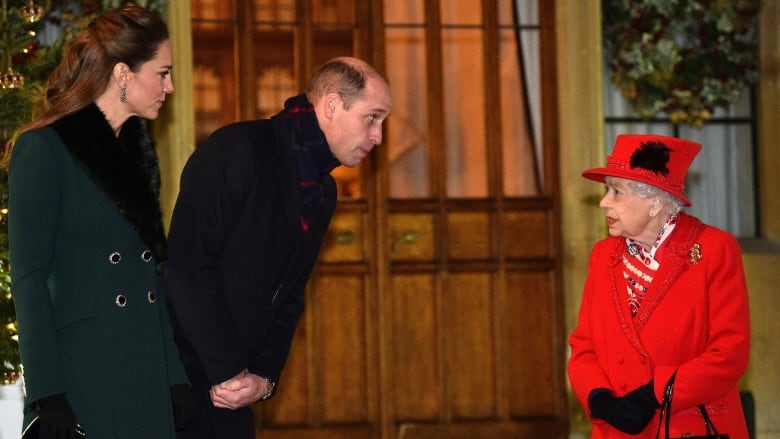 Queen Elizabeth talks with Prince William and Kate, Duchess of Cambridge, in the quadrangle at Windsor Castle on Dec. 8 as they met and thanked members of the Salvation Army and volunteers and key workers from local organizations and charities. (Glyn Kirk/The Associated Press)
Queen Elizabeth talks with Prince William and Kate, Duchess of Cambridge, in the quadrangle at Windsor Castle on Dec. 8 as they met and thanked members of the Salvation Army and volunteers and key workers from local organizations and charities. (Glyn Kirk/The Associated Press)
For the past few years, there has been much anticipation before Christmas over how members of the Royal Family would come together to mark the festive season.
Amid rumours of rifts involving Prince William and Kate, Duchess of Cambridge, and Prince Harry and Meghan, Duchess of Sussex, public appearances at Christmas became an opportunity to try to suss out the true nature of royal relationships. Maybe a sideways glance during a walk to church would indicate who was getting along — or not — with whom?
Such glimpses might not come anywhere close to revealing much of anything, but the interest was there.
It is still there, even in this year turned upside down by the coronavirus pandemic, complete with the recommended abandonment of large family get-togethers — royal or otherwise — over the holidays.
Queen Elizabeth has decided she and Prince Philip will mark Christmas quietly at Windsor Castle — where they have been living in virtual isolation for most of the pandemic — rather than with the large family gathering that has taken place over Christmas at her Sandringham estate northeast of London for more than three decades.
New, stricter pandemic restrictions announced Saturday that cover the area around Windsor could mean further changes to any plans some members of the Royal Family may have had for Christmas Day.
“Under these restrictions, individuals may meet with one person from another household outdoors, and there will be interest in whether one of the Queen’s children or grandchildren meets with her outside Windsor Castle at Christmas in accordance with these requirements,” said Carolyn Harris, a Toronto-based royal historian and author.
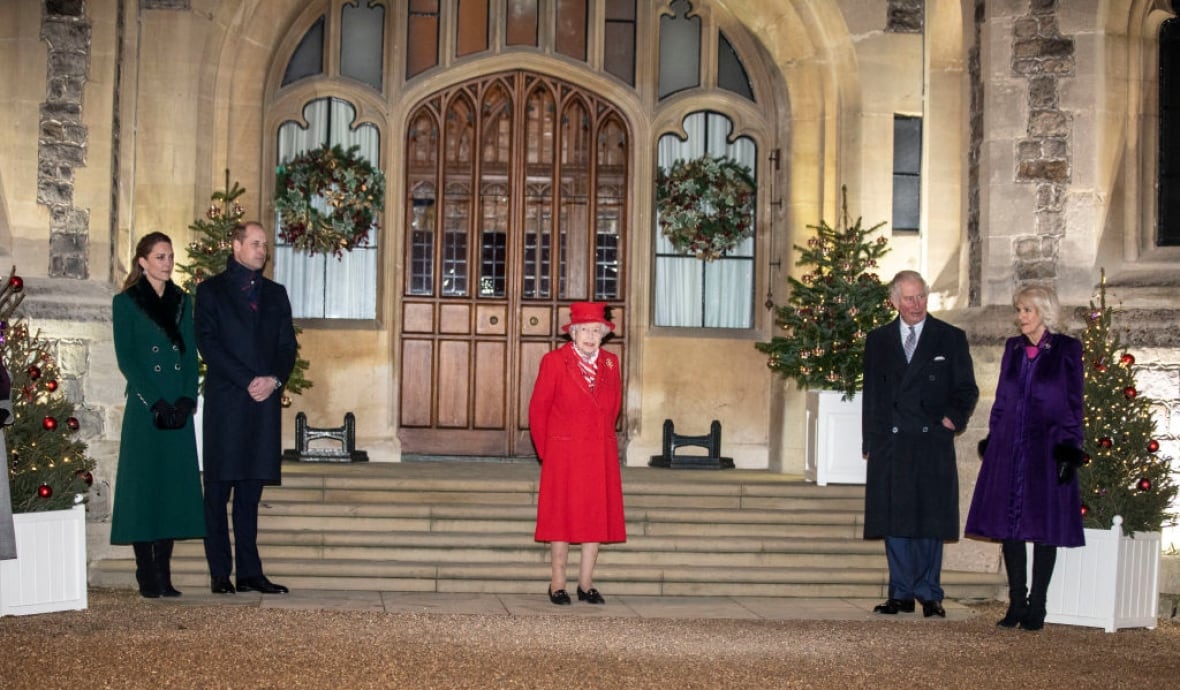 Kate, left, William, Queen Elizabeth, Prince Charles and Camilla, Duchess of Cornwall, keep their physical distance as they thank volunteers and key workers at Windsor Castle on Dec. 8. (Richard Pohle/Getty Images)
Kate, left, William, Queen Elizabeth, Prince Charles and Camilla, Duchess of Cornwall, keep their physical distance as they thank volunteers and key workers at Windsor Castle on Dec. 8. (Richard Pohle/Getty Images)
Already there has been notable interest in another outdoor — and physically distanced — pre-Christmas meeting of some senior members of the family at Windsor Castle.
The Queen stood outside, well apart from William and Kate, Prince Charles and Camilla, Duchess of Cornwall, and Prince Edward and Sophie, Countess of Wessex, as they thanked volunteers and workers from local charitable organizations.
It’s hardly the first time the Royal Family has altered its actions to accommodate the world around them.
“During times of crisis, the Royal Family adjusts their own routines to reflect the conditions experienced by the wider public,” said Harris.
In the Second World War, food was rationed at Buckingham Palace, even on formal occasions, when more modest meals were served to visitors — albeit still on the fancy china.
The announcement earlier this month of the Queen’s decision to mark Christmas quietly at Windsor Castle “just shows how … clear the palace [is] about understanding the nation, or particularly the Queen is, in her 95th year,” said British public relations expert Mark Borkowski, adding that the announcement was a further reflection of her ability to do “the right thing at the right time in the right way.”
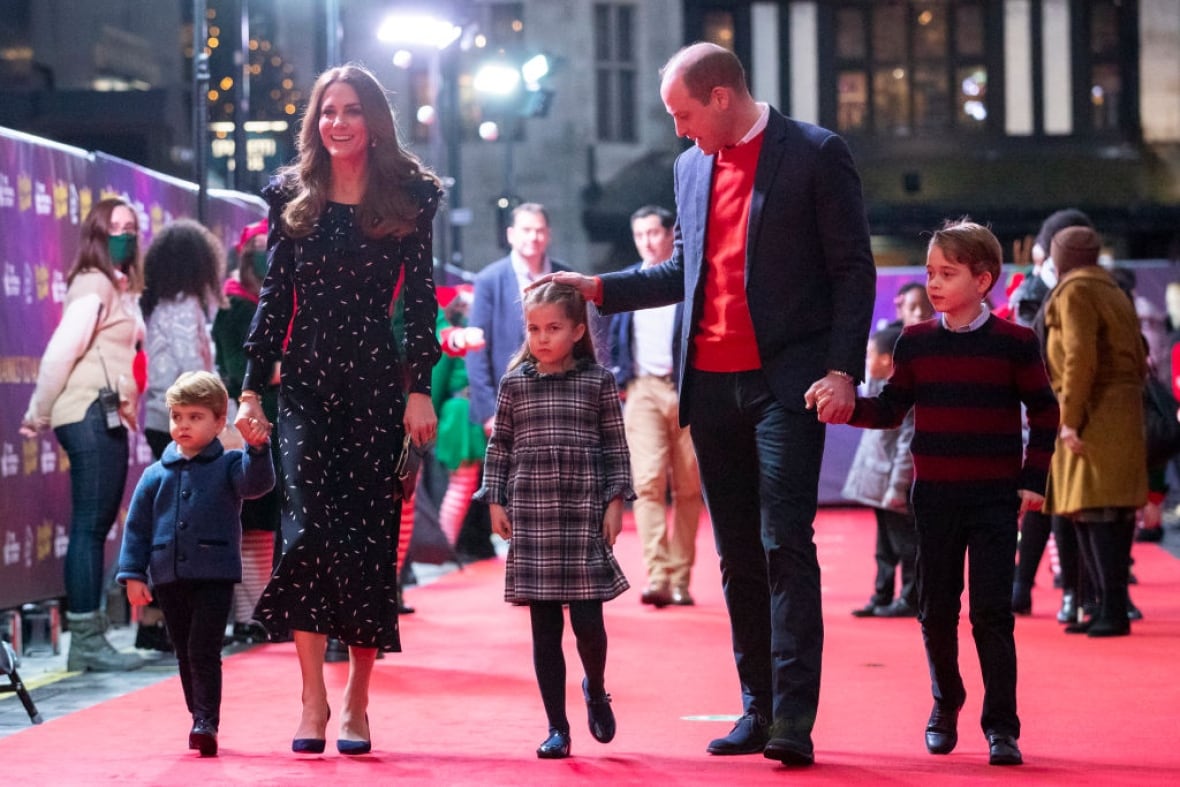 William and Kate walk with their children, Prince Louis, left, Princess Charlotte and Prince George, on the red carpet — their first such appearance as a family — to attend a special pantomime performance in London on Dec. 11 to thank key workers and their families for their efforts throughout the pandemic. (Aaron Chown/Getty Images)
William and Kate walk with their children, Prince Louis, left, Princess Charlotte and Prince George, on the red carpet — their first such appearance as a family — to attend a special pantomime performance in London on Dec. 11 to thank key workers and their families for their efforts throughout the pandemic. (Aaron Chown/Getty Images)
Harris said public interest in royal Christmas celebrations mirrors the interest in royal weddings and births — they’re milestones that average people also experience and ones that could provide “a glimpse of more personal moments.”
That was seen this year, she said, when William and Kate took their children to see a Christmas pantomime, and there was public curiosity about how Prince George, Princess Charlotte and Prince Louis responded to the performance, and how their parents explained the jokes to them.
Watching how the royals celebrate Christmas goes back several generations.
Some of the traditions they followed then found favour with the wider public, especially during the 19th-century reign of Queen Victoria, when her husband, Prince Albert, brought his own traditions from Germany, particularly the Christmas tree.
Christmas trees had been in use during previous royal Christmases, but the unprecedented expansion of that era’s mass media helped to spread the word about what the royals were doing in the festive season.
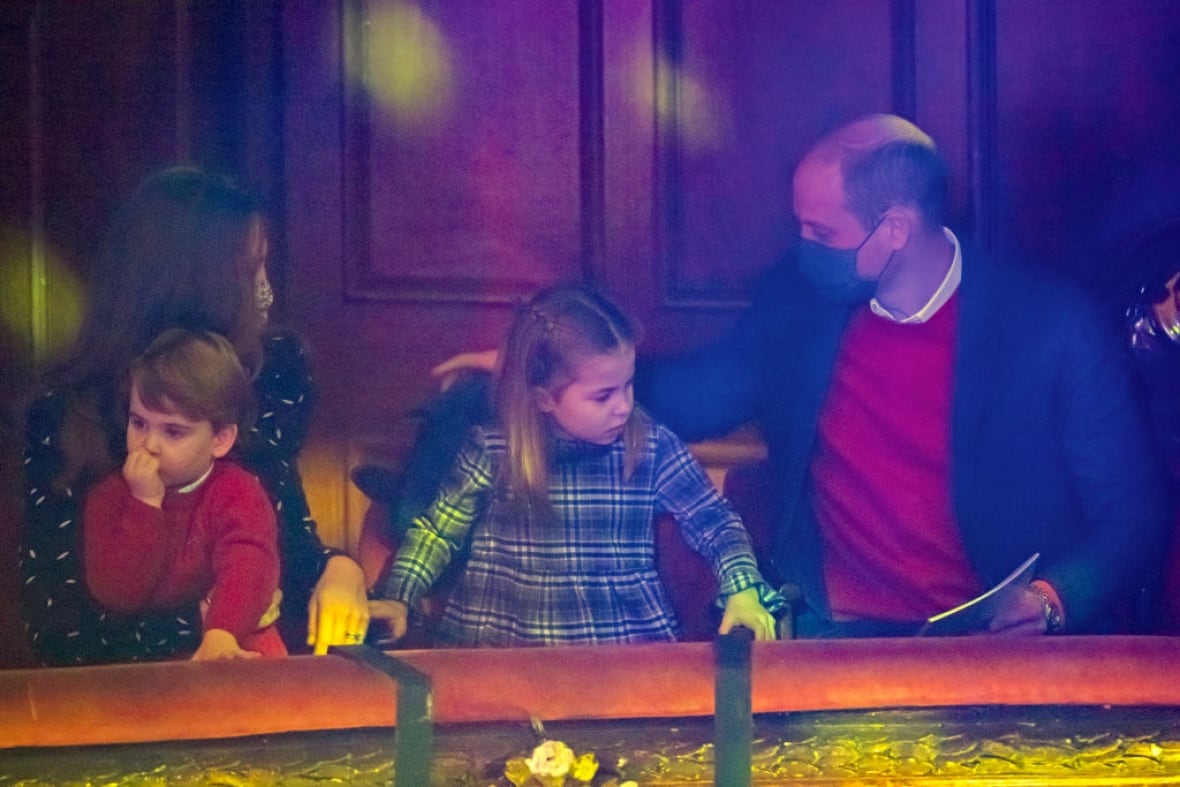 William and Kate sit with Prince Louis and Princess Charlotte at the pantomime performance. (Aaron Chown/Getty Images)
William and Kate sit with Prince Louis and Princess Charlotte at the pantomime performance. (Aaron Chown/Getty Images)
“An image in the London Illustrated News of Queen Victoria, Prince Albert, their children and Queen Victoria’s mother gathered around the Christmas tree provided a famous image of the royal Christmas, which was widely admired and emulated,” said Harris.
In that instance, there was also some royal image management going on in an attempt to counter public perception of the monarchy at the time.
“After the scandalous reigns of Queen Victoria’s uncles, George IV and William IV, Queen Victoria and Prince Albert were determined to demonstrate that the monarchy was once again respectable and mirrored the prevailing middle-class views of the importance of domesticity and the home as a refuge from the concerns of the wider world,” said Harris.
“An image in the London Illustrated News of Queen Victoria, Prince Albert, their children and Queen Victoria’s mother gathered around the Christmas tree provided a famous image of the royal Christmas, which was widely admired and emulated,” said Harris.
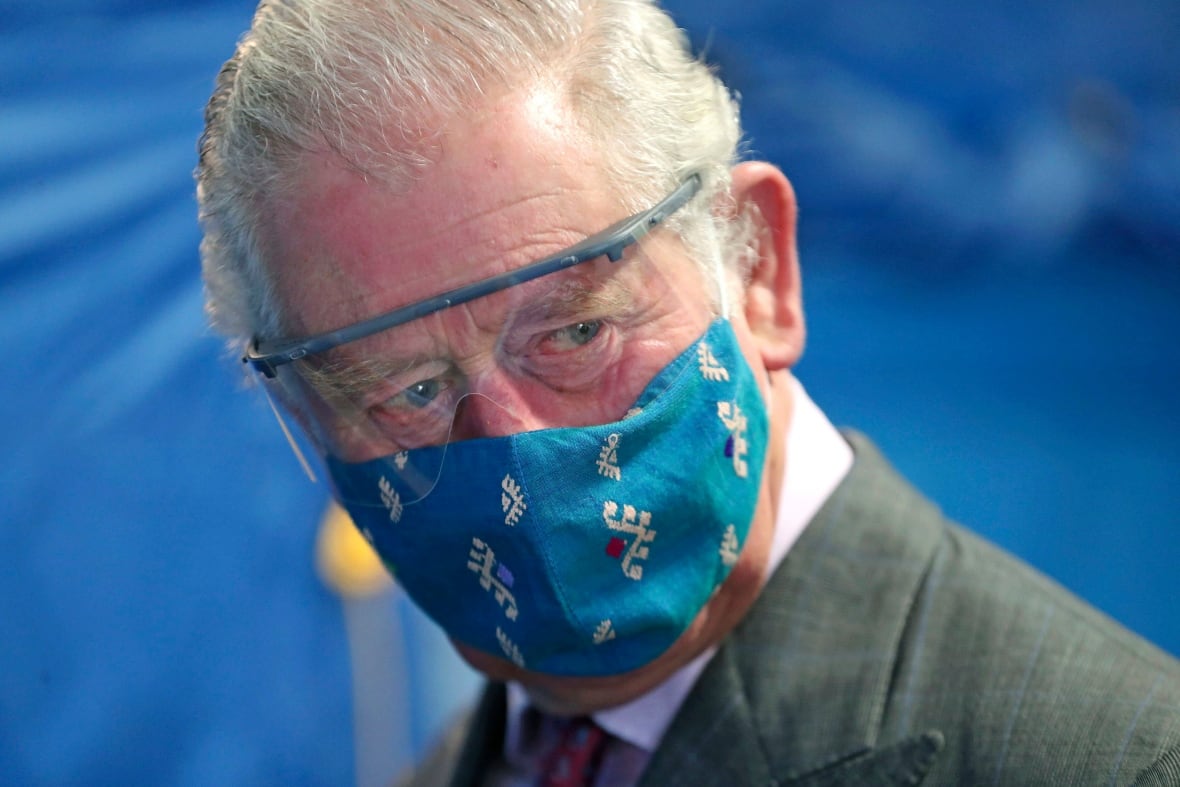
Prince Charles, who had COVID-19 in the early days of the pandemic, says he will get a vaccination against the coronavirus.
But he’s not expecting his shot will come any time soon.
His comments came Thursday as he and Camilla toured a vaccination centre in western England and met front-line health-care workers administering the Pfizer-BioNTech vaccine.
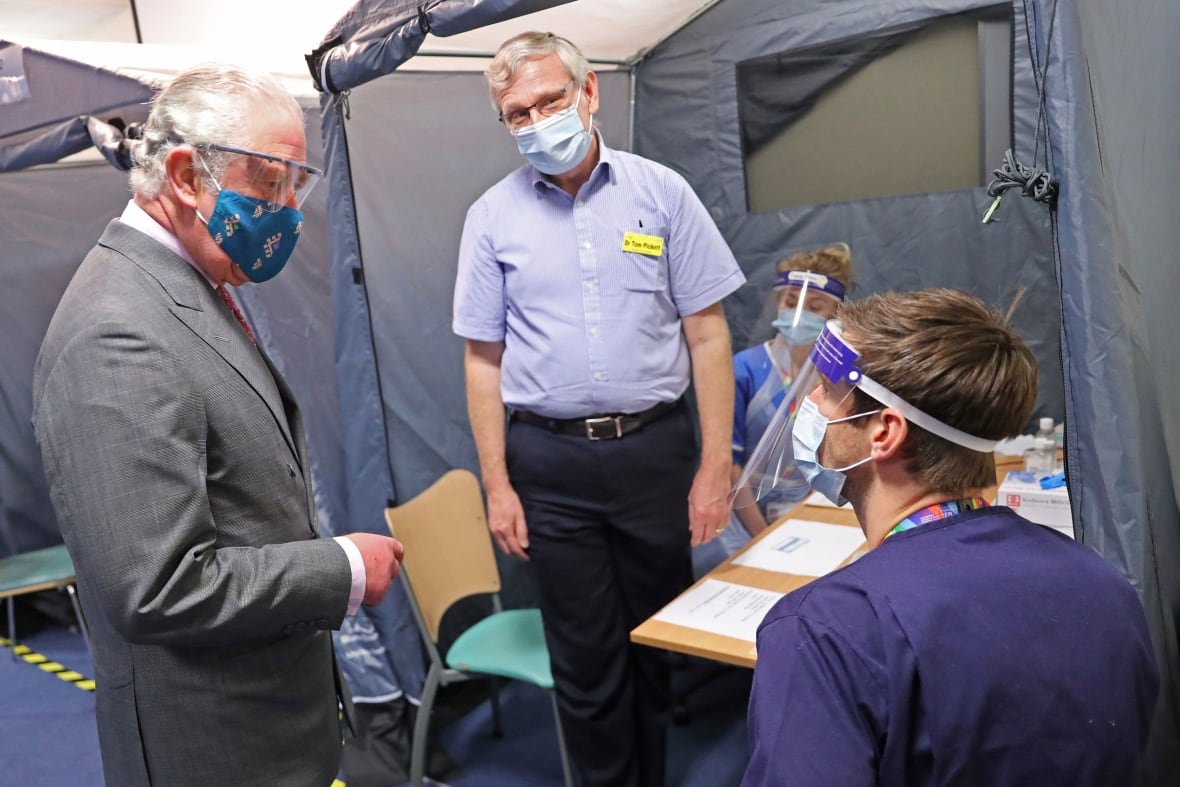 Charles chats with front-line workers administering and receiving the COVID-19 vaccine on Thursday. (Chris Jackson/The Associated Press)
Charles chats with front-line workers administering and receiving the COVID-19 vaccine on Thursday. (Chris Jackson/The Associated Press)
“I think I’ll have to wait for the AstraZeneca one before it gets to my turn. I’m some way down the list,” Charles said, according to a report from ITV.
Speculation has swirled about whether or when his mother, the Queen, might also receive a coronavirus vaccine, with palace comments widely reported that she might let it be known once she and Prince Philip had received the shot.
Flash back more than six decades, to a time when the British government wanted members of the public to take another vaccine, and Elizabeth let it be known that Charles and his sister Anne had received shots to protect them against polio.
“As a result, public mood over the vaccine thawed and millions of others went on to take the drug, which the National Health Service said helped cases ‘fall dramatically,'” the Daily Express reported recently.